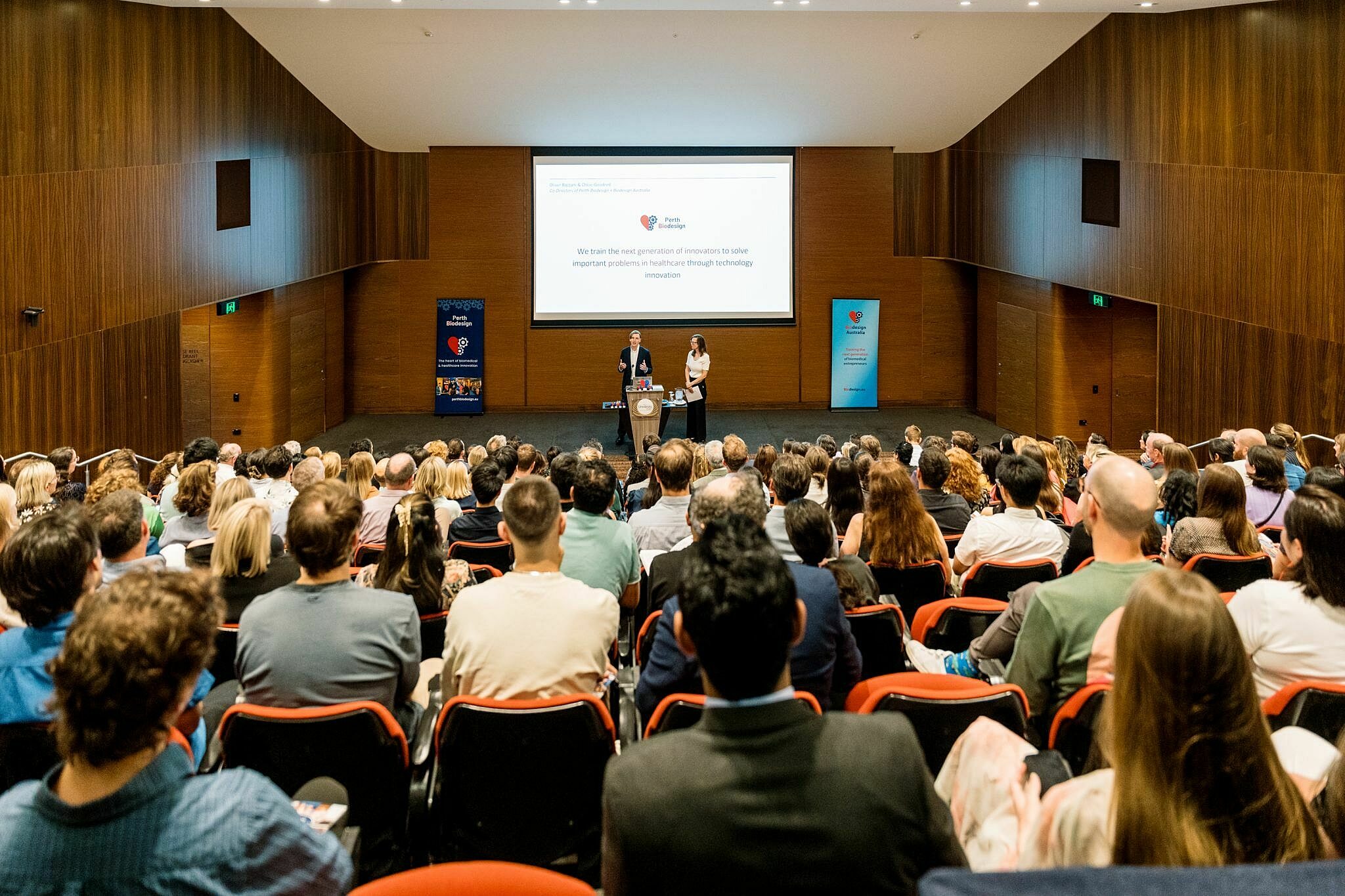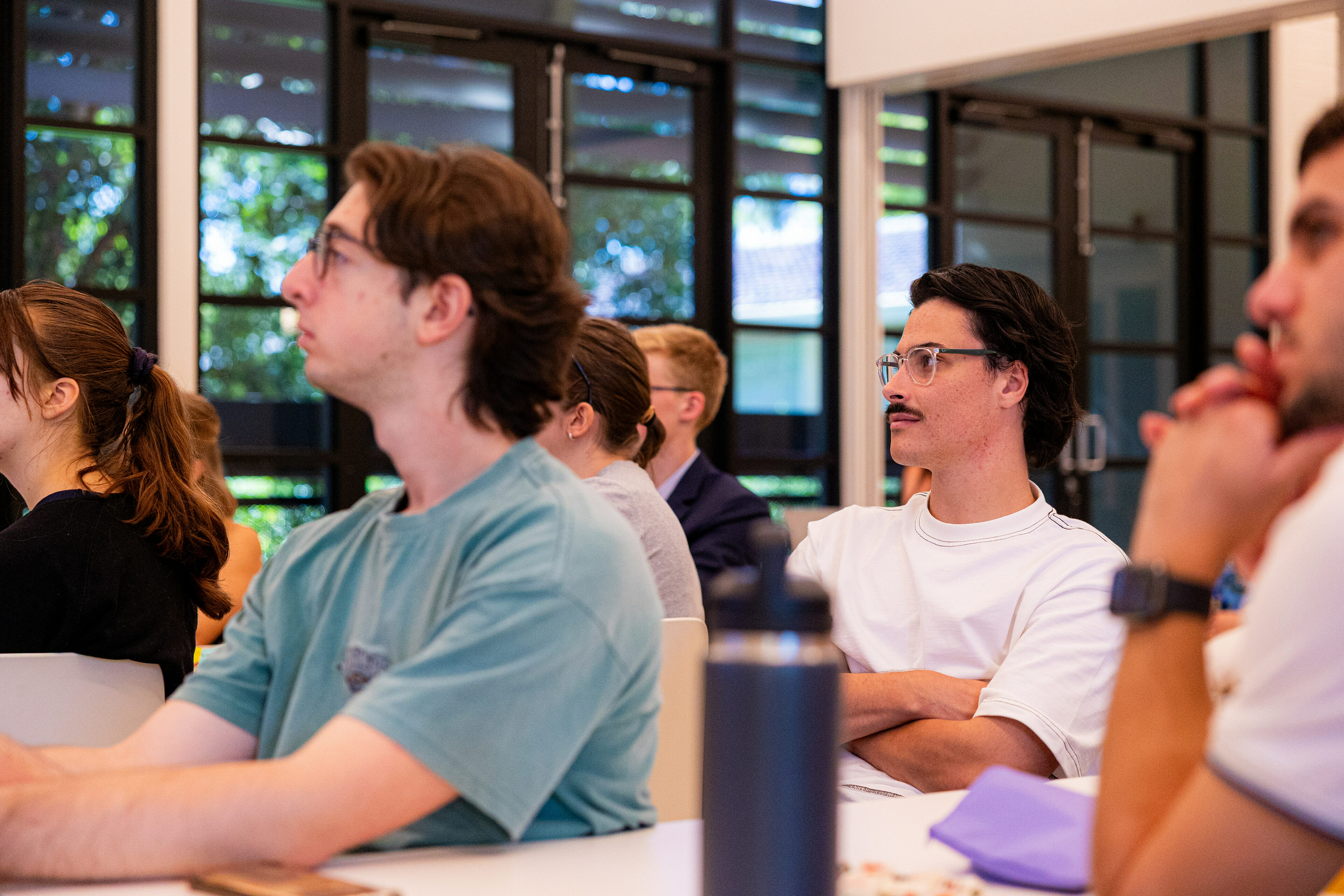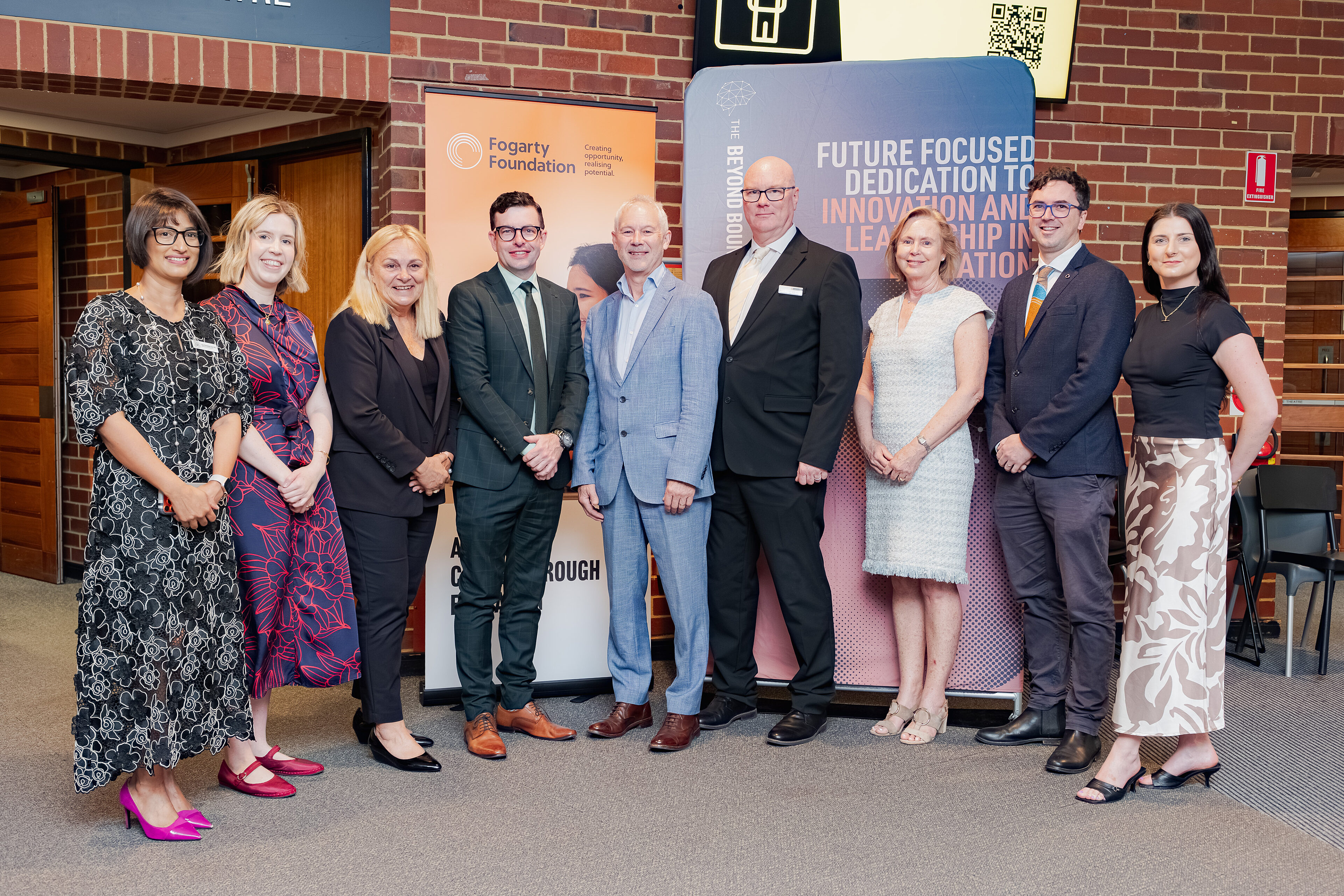
Alumni Stories Navigating the Stars: An Interview with UWA Fogarty Alumni Justin Kruger
One young West Australian's journey from Harvey to Stanford
Justin Kruger, a UWA Fogarty Alumni, has recently won the Ballhaus Prize for best PhD thesis as part of the 2024 graduating class at Stanford University studying Aeronautics and Astronautics. It is titled "Flight Algorithms for Autonomous Tracking and Navigation of Distributed Space Systems Using Inter-Satellite Bearing Angles." (in less academic words, how to navigate multiple spacecraft using cameras) We had the privilege of catching up with Justin and finding out how a boy from the south west of Western Australia ended up at Stanford University, researching Space!
Kruger's fascination with space began early, perhaps sparked by delving into classic sci-fi tales like Star Wars during his childhood. Originally from Harvey, a rural area in Western Australia, Justin became a UWA Fogarty Scholar when he commenced his undergraduate studies in Engineering (Mechatronics) in 2015 and in Science (Physics) in 2016 at the University of Western Australia. Despite the challenges of launching a space-related career in Australia at the time, he persevered with his interests and forged an exciting pathway. Throughout his academic pursuits, his passion for space exploration remained steadfast, leading him to seize opportunities for industry exposure, including an internship at ANU.
Driven by his desire to contribute to the field of space technology, Kruger sought academic avenues abroad, eventually securing admission to Stanford University in California (completing a Masters in 2020 and then a PhD in Aeronautics and Astronautics in 2024). His tenure at Stanford, spanning from his Masters to a Ph.D. and now as a post-doctoral researcher, has been marked by undertaking research and other collaborative efforts at the Space Rendezvous Laboratory. The Laboratory is the world’s foremost lab for multi-satellite systems, and they believe that advanced multi-satellite systems will help humanity address fundamental questions of space science, technology, exploration, and sustainability.
Kruger's doctoral thesis revolves around the concept of ‘distributed space systems’, advocating for the synergy of multiple spacecraft to accomplish objectives beyond the reach of individual units. Central to his research is the development of vision-based navigation algorithms, leveraging onboard cameras to facilitate autonomous position estimation and navigation. By addressing the inherent challenges of distance determination in vision-based systems, Kruger's work seeks to unlock the potential of distributed space systems across various orbital and deep space environments.
So, what does this mean in practice... (and to the layman!)? Justin explains this as ‘multiple spacecrafts interacting to achieve objectives impossible or difficult to achieve with a single spacecraft. We can relate this principle to – for example – humans interacting to pursue goals as a community’.
Kruger's research holds significance beyond academia, influencing the trajectory of space exploration and utilisation. Through the enhancement of navigation algorithms and their validation via programs like NASA Starling, Kruger seeks to facilitate various applications of his work with distributed space systems. Starling consists of four small spacecraft and is conducting the first demonstrations of autonomous vision-based navigation for a spacecraft swarm. You can track the positions of the Starling Spacecraft in real time. These applications focus on tasks such as lunar settlements, orbital debris monitoring, and satellite maintenance.
Reflecting on his work, Kruger expresses, "Space technology is only growing more and more vital to both everyday life and our species’ future, and I’m extremely excited to be contributing to that journey." His contributions underscore the evolving importance of space technology in both contemporary life and humanity's long-term prospects. Mapping Earth from space facilitates monitoring of natural disasters like bushfires, hurricanes, earthquakes, and floods, enabling rapid assessment, damage identification, and coordinated rescue efforts, while also aiding ongoing environmental monitoring and resource management initiatives.
Kruger, as a representative of Western Australia, stresses the significance of regional participation in space exploration initiatives. Emphasising WA's strong capability in sectors such as mining, remote operations, and agriculture, he advocates for aligning our regional strengths with the dynamic landscape of space technology. He asserts, "The ongoing space ‘boom’ leaves enormous potential for a smaller region like WA to become a larger player. In doing so, we can maintain more home-grown industry knowledge, keep talented people in WA, and be closely involved in humanity’s next giant leap." By nurturing local talent and fostering collaborations with international partners, regions like WA can establish itself as a key contributor to humanity's pursuit of space exploration.
What would Justin recommend for a young person in WA interested in working in space related fields?
Kruger's experiences provide lessons and guidance for budding STEM enthusiasts, stressing the importance of inner drive, embracing diverse opportunities, and teamwork. He urges young individuals to pursue their interests through research and to stay flexible in adapting to new fields. Kruger notes, "Almost anything you study can be usefully applied to a space project. Keep an eye out for chances to collaborate with like-minded people and you’ll almost definitely find the experiences you need to realise that dream." Emphasising the interdisciplinary nature of STEM and its wide-ranging societal impacts, he encourages collaboration and partnerships as key ways to unlock opportunities in the realm of space exploration.
For the next 1-2 years, Justin will continue working as a postdoctoral researcher at Stanford. He has achieved significant success with the Starling mission, which has garnered considerable interest from NASA. Although the initial phase of the mission concluded in May, it has been extended until the end of 2025. During this time, Justin will develop new navigation software and conduct further experiments, with an increased emphasis on space situational awareness to enhance the tracking and management of objects in space for safety and sustainability.
In the longer term, there is discussion about launching a second Starling mission around the Moon, which is an exciting prospect. Additionally, Justin aims to leverage his developments to contribute to an interplanetary science mission, such as deploying a swarm of spacecraft to explore another planet, and to participate in an Australian space mission. He hopes to achieve these goals through collaborations with local startups or the Australian Space Agency.
Justin Kruger's journey from his initial fascination with space to innovative research in autonomous tracking and navigation of distributed space systems showcases his proactive approach in forging a path into his career. His efforts not only drive forward space exploration but also underscore the substantial room for enhancement in providing WA’s students with greater access to space careers and opportunities. Kruger's advice to aspiring STEM enthusiasts highlights the value of intrinsic motivation, openness to diverse opportunities, and collaboration.
Latest News

Perth Biodesign 2025: Sparking Innovation in Healthcare

Developing WA's Future Leaders with Fogarty Ripple

